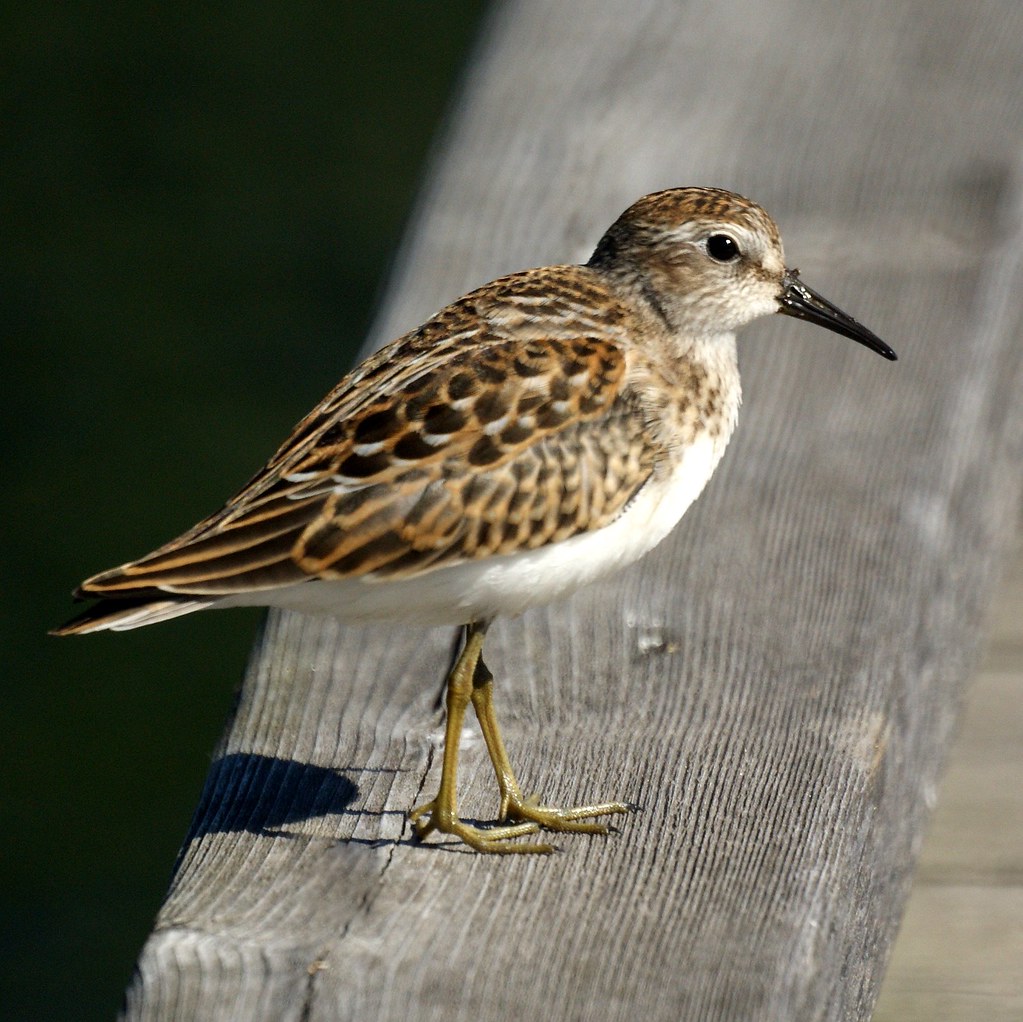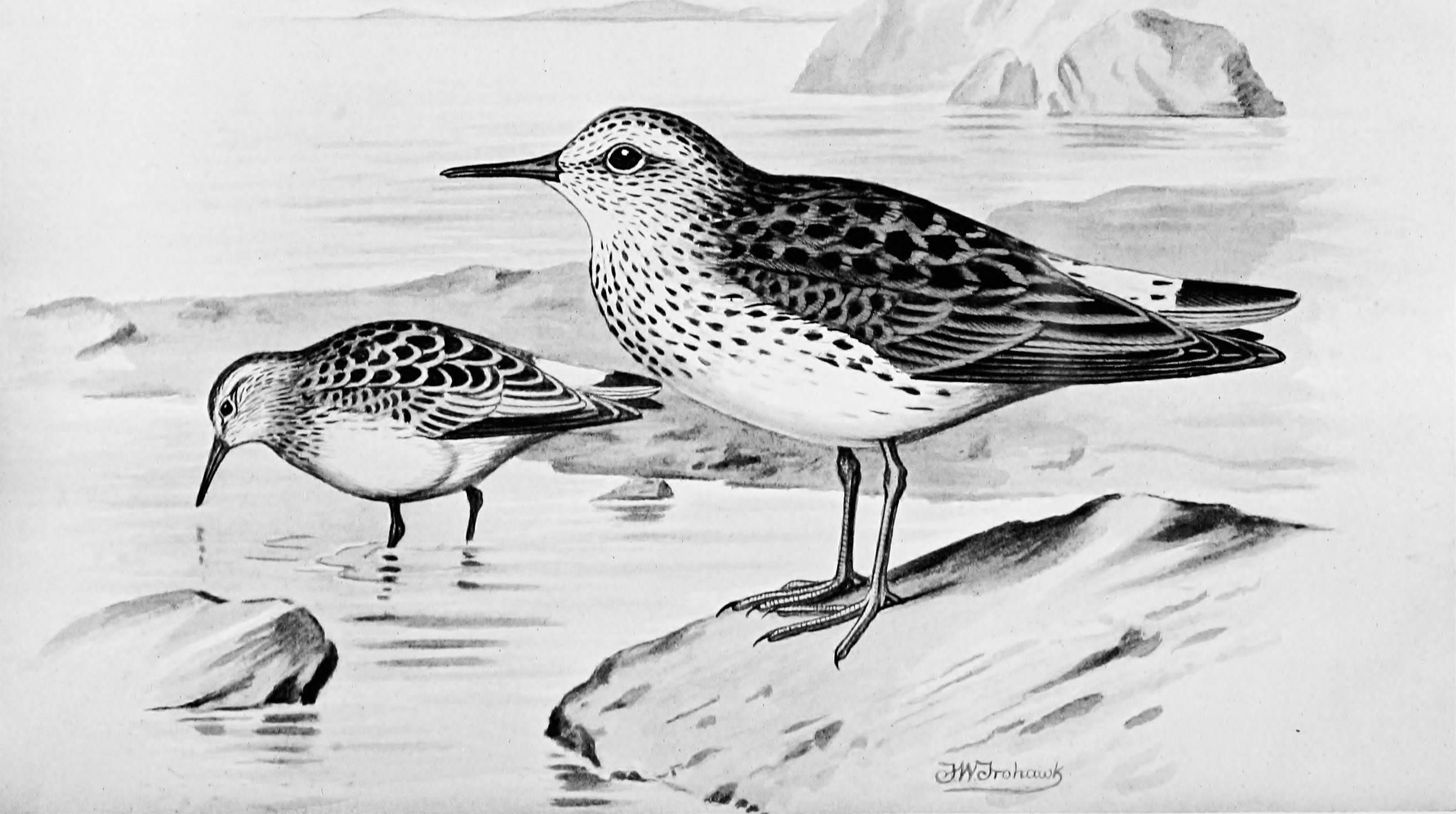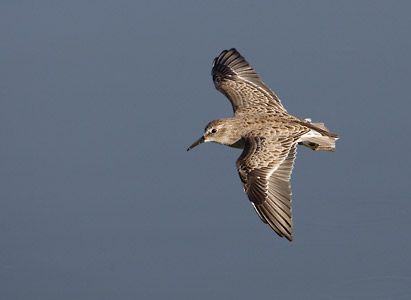
Order: Charadriformes
Family: Scolopacidae
Genus: Calidris
Species: C. minutilla
.

Sandpipers in general are among the most migratory animals on the planet, and the least sandpiper is no exception to this. Their breeding habitat stretches across Northern North America, from Alaska to Nova Scotia. During the harsh winter months they migrate farther south to the Southern United States, as well as Central America and parts of South America. Many other species of sandpipers take it even one step further than this, and migrate from the Arctic circle to as far South as the mountains of Chile (whereas least sandpipers don’t go as far South and stick to lower elevations) with only a few brief stopovers. They then of course make the same journey on the way back to their breeding grounds. One of these stopovers on their return flight is Delaware Bay on the East Coast, which constitutes about 90% of the total migration time. This time is synced up with the breeding season of Atlantic Horseshoe crabs, meaning they can “fuel up” before the remainder of their journey. (Mizrahi, Peters, Hodgetts, 2012) On the West coast, the milder Pacific Ocean allows them to stay further North than they would have to on the East coast. 
Throughout their breeding range, you can fid them inhabiting all manner of bogs, tundras, and boreal forests. In the southernmost extent of their breeding range, in BC, they are likely to inhabit sand dunes. In their nonbreeding range, they prefer any sort of wetland, especially tidal flats. While all sandpipers have similar habitat preferences, least sandpipers tend to prefer habitats that are a little more “inland” and tend to prefer salt water marshes rather than the sandy beaches at the water’s edge. This way they can access some of their favorite foods, like small invertebrates found in sand.
Least Sandpipers eat mostly insects and other invertebrates, although they occasionally supplement their diet with seeds. Like many sandpipers, they like to comb the moist mud of beaches and tidal flats for small arthropods and eggs. Their bills are small enough to take advantage of the surface tension of the water allowing them to suck up their prey. During the breeding season, they’re going to spend more time foraging on drier sites in the tundra or boreal forests.
In order to attract a mate, a male sandpiper will perform display flights over their future nesting sites. These display flights consist of prolonged flights of one-three minutes at a height of 10-30 meters. (Miller, 1983) Least Sandpipers prefer tufts of marsh grass for their nests. The nests are established by males who start the nest by making a scrape. The female adds the finishing touches with a lining of dead vegetation. A typical clutch size for least sandpipers is 4 eggs, and this is true for both initial and replacement clutches. This also appears to be fairly consistent across it’s range. (Miller, 1979)
Because Least Sandpipers are so widespread, it is difficult to accurately assess their conservation status. According to a 2006 survey there are approximately 700,000 individuals. This number was reached by counting the birds as they did their migration. it is believed they are fairly numerous and their population is considered stable throughout most of their range. (Morrison, 2006) Unfortunately, like many migratory birds, there are significant threats on the horizon due to rabidly disappearing habitats, especially wetlands. There is a special concern on the East Coast for these birds, where surveys have counted a steady decline of about 3% annually of their population over the last 40 years, and researches are not exactly sure why(Bart et al. 2007, Morrison & Hicklin 2001, Morrison et al. 2001a) One theory involves the recent depletion of Atlantic horseshoe crabs (Lymulous polyphemus) whose eggs provide a critical “refueling” stop.
Miller, E. (1983). Structure of Display Flights in the Least Sandpiper. [online] Available at: https://academic.oup.com/condor/article/85/2/220/5204967 [Accessed 27 Feb. 2019]. Burns, J. and Ydenberg, R. (2002). The effects of wing loading and gender on the escape flights of least sandpipers ( Calidris minutilla ) and western sandpipers ( Calidris mauri ). [online] Available at: https://link.springer.com/article/10.1007/s00265-002-0494-y [Accessed 27 Feb. 2019]. Miller, Edward H. (1979) Egg size in the Least Sandpiper Calidris minutilla on Sable Island, Nova Scotia, Canada. Ornis Scandanavica. Vol. 10. No. 1. pages 10-15 Miller, Edward H. (1985) Parental behavior in the Least Sandpiper (Calidris minutilla) Canadian Journal of Zoology Spaans, A. (1974). Molt of Flight and Tail Feathers of the Least Sandpiper in Surinam, South America on JSTOR. [online] Available at: https://www.jstor.org/stable/4512271?seq=1#metadata_info_tab_contents [Accessed 27 Feb. 2019]. Butler, R. and Kaiser, G. (1995). Migration Chronology, Sex Ratio, and Body Mass of Least Sandpipers in British Columbia. [online] JSTOR. [Accessed 27 Feb. 2019]. Myers, J. (1981). Cross-seasonal interactions in the evolution of sandpiper social systems. Miller, E. (1983.) Components of variation in nuptial calls of the least sandpiper (Calidris minutila; Aves, Scolopacidae). Systematic zoology. Vol 35 pages 400-413

Leave a Reply